What Is Tarantula Molting
Tarantula molting is a fascinating and essential process for these arachnids, akin to shedding their skin. Unlike mammals that grow continuously, tarantulas, like all arthropods, have a rigid exoskeleton. This exoskeleton, primarily composed of chitin, doesn’t allow for growth. As the tarantula grows, it becomes necessary to shed this outer layer and reveal a new, larger one underneath. This process, known as molting, allows the tarantula to grow, regenerate lost limbs, and replace damaged parts. It’s a vulnerable but crucial stage in their lifecycle, requiring specific environmental conditions and careful observation from the tarantula owner. Understanding the tarantula molting stages is key to providing appropriate care and ensuring the health and longevity of your pet.
Why Do Tarantulas Molt
The primary reason tarantulas molt is to grow. As a tarantula matures, its exoskeleton becomes too small to accommodate its increasing size. Molting provides the necessary mechanism for expansion. During the molting process, a new, larger exoskeleton is formed beneath the old one. The tarantula absorbs fluids, causing the old exoskeleton to split open, typically along the carapace (the top part of the cephalothorax) and the abdomen. The tarantula then slowly crawls out of the old exoskeleton, leaving behind a perfect replica of itself, which is called an exuvia. Besides growth, molting also serves other purposes. It allows tarantulas to regenerate lost limbs. If a tarantula loses a leg or a pedipalp, the new exoskeleton will include a regenerated limb. Furthermore, molting helps in the removal of parasites and the replacement of damaged sensory structures, ensuring the tarantula’s continued health and functionality. It is an integral part of their survival.
The Stages of Tarantula Molting
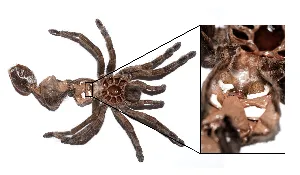
The molting process can be broken down into distinct phases, each characterized by specific behaviors and physical changes. Recognizing these stages is vital for providing appropriate care and avoiding unnecessary stress to the tarantula. The main phases include the premolt phase, the actual molting process, and the post-molt phase. Each phase requires a different level of attention and understanding from the owner. By understanding the tarantula molting stages, you can better anticipate your pet’s needs and ensure a successful molt.
Premolt Phase
The premolt phase is the preparatory period before the actual shedding of the exoskeleton. It’s marked by a variety of changes in the tarantula’s behavior and appearance. This phase can last from a few weeks to several months, depending on the tarantula’s age, species, and environmental conditions. During premolt, the tarantula will usually stop eating and may become less active. This behavior is a sign that the tarantula is conserving energy for the molting process. The tarantula’s abdomen may appear darker and more translucent as the new exoskeleton forms beneath. The tarantula may also become more secretive and spend more time in its hide.
Signs of Premolt
Several telltale signs indicate that a tarantula is entering the premolt phase. One of the most common is a darkening of the abdomen. As the new exoskeleton develops, the old one becomes more transparent, revealing the developing structures underneath. Another sign is the tarantula’s refusal to eat. While some tarantulas may continue to eat sporadically, a consistent loss of appetite is a strong indicator. Additionally, the tarantula might become more sluggish, retreating to its hide and avoiding activity. Some tarantulas may also develop a bald spot on their abdomen, especially in species that kick urticating hairs as a defense mechanism. Observing these signs helps you anticipate the upcoming molt and adjust your care accordingly.
Preparing for Molt
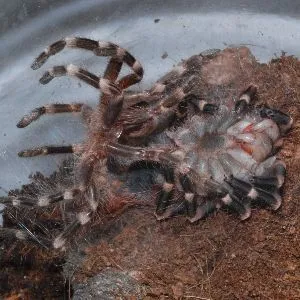
Preparing for the molt involves creating an optimal environment for the tarantula. The most important aspect is to maintain the correct humidity levels, usually by misting the enclosure regularly or providing a water dish. A moist environment helps the old exoskeleton to separate from the new one. It is also important to remove any uneaten prey items from the enclosure. These can disturb the tarantula during the molting process. Ensure the enclosure is free from any hazards, like sharp objects or unstable decorations, where the tarantula might get stuck. Provide a secure and secluded space, like a hide, where the tarantula can feel safe and undisturbed during the molt. Avoid handling or disturbing the tarantula during premolt and the molting process to minimize stress.
The Molting Process
The molting process itself is a delicate and vulnerable time for the tarantula. The tarantula will typically lie on its back, although some species molt in a more upright position. The old exoskeleton will split, usually along the carapace and abdomen. The tarantula will then slowly wriggle out of its old skin, a process that can take anywhere from a few minutes to several hours, depending on the size and species of the tarantula. During this time, the tarantula is extremely vulnerable to injury and attack. It’s crucial not to disturb the tarantula during the molt. The new exoskeleton will be soft and pliable after molting, and the tarantula will be significantly weaker than usual. Once the molting process is complete, the tarantula will look almost exactly the same as before, but larger and with brighter coloration.
Post-Molt Phase
After molting, the tarantula enters the post-molt phase, which is a period of recovery and hardening of the new exoskeleton. During this time, the tarantula’s exoskeleton is soft and vulnerable. The tarantula will remain in its hide or a secluded area, allowing the new exoskeleton to harden fully. The duration of the post-molt phase varies, but it usually lasts from a few days to a couple of weeks, depending on the tarantula’s age and species. During this phase, it’s important to maintain the proper humidity levels to aid the hardening process. Avoid handling the tarantula until its fangs have fully hardened, as they are essential for feeding and defense. Avoid offering food during the first few days of this phase to allow it to recover fully. Then provide a small amount of food.
Caring for Your Tarantula After Molting
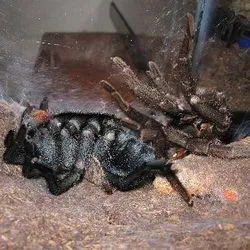
Caring for a tarantula after molting involves a few key considerations to ensure its well-being. The tarantula is particularly vulnerable during this time. Careful attention to environmental factors and feeding practices is critical for its recovery. Providing the right conditions can significantly reduce stress and support the tarantula’s growth. Careful observation of the animal is the key.
Feeding
Do not offer food immediately after molting. The tarantula’s fangs and exoskeleton are still soft, and it can’t properly grasp and consume prey. Wait a few days, usually a week, until the fangs have fully hardened before offering food. Start with a small, easily manageable prey item, such as a small cricket or mealworm. Overfeeding during this phase can stress the tarantula, so it’s best to offer a moderate amount of food and observe the tarantula’s appetite. Increase the size of the prey items gradually as the tarantula’s exoskeleton hardens and its appetite returns. Always remove uneaten prey items to prevent them from stressing or harming the tarantula.
Humidity and Environment
Maintain the appropriate humidity levels for the tarantula’s species, as this is crucial for the hardening of the new exoskeleton. You can achieve this by misting the enclosure with water regularly or providing a water dish. The humidity level is especially important after molting. Ensure the enclosure has good ventilation to prevent the buildup of mold or bacteria. Avoid drastic temperature changes, as they can stress the tarantula. Keep the enclosure clean and free from any potential hazards that could harm the tarantula during its vulnerable post-molt phase. A stable and controlled environment will help your tarantula recover and thrive.
Handling
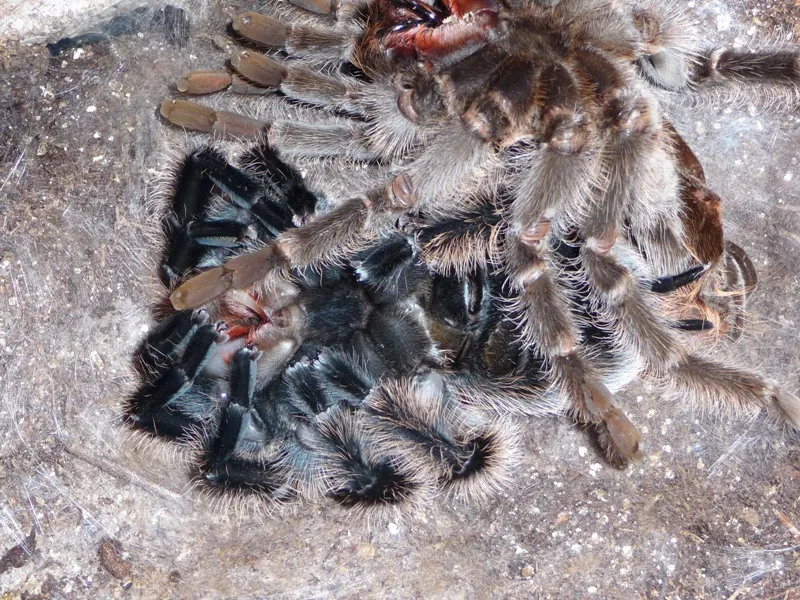
Avoid handling your tarantula immediately after molting. The exoskeleton is soft, and the tarantula is more vulnerable to injury. Even a small drop can be fatal. Wait at least a week or two after the molt, or until the tarantula’s fangs and exoskeleton have completely hardened, before attempting to handle it. When handling is necessary, do so with extreme care and gentleness, supporting the tarantula’s body to minimize the risk of injury. Always wash your hands before and after handling your tarantula. Remember that tarantulas should be handled only when necessary. Regular handling can be stressful for these creatures and can lead to bites or defensive behavior.
Common Problems During Molting and How to Solve Them
While molting is a natural process, several problems can arise. Recognizing these issues and knowing how to address them is essential for the health of your tarantula. Common issues range from the tarantula’s refusal to molt to getting stuck during the process. These problems can be addressed through environmental adjustments and sometimes, careful intervention.
Tarantula Refuses to Molt
Sometimes, a tarantula may not molt even when it appears to be ready. This can be due to various factors. The most common is inadequate humidity. Low humidity can make it difficult for the old exoskeleton to separate. Ensure that the enclosure has appropriate humidity levels for the tarantula’s species. Temperature is another factor. Temperatures that are too low can slow down the molting process. Maintain a consistent temperature range suitable for the tarantula’s species. Nutritional deficiencies, such as a lack of essential nutrients in the tarantula’s diet, can also hinder molting. Provide a varied and balanced diet, including appropriately sized insects. If your tarantula continues to refuse to molt, consult with a veterinarian specializing in exotic animals or an experienced tarantula keeper.
Tarantula Gets Stuck During Molt
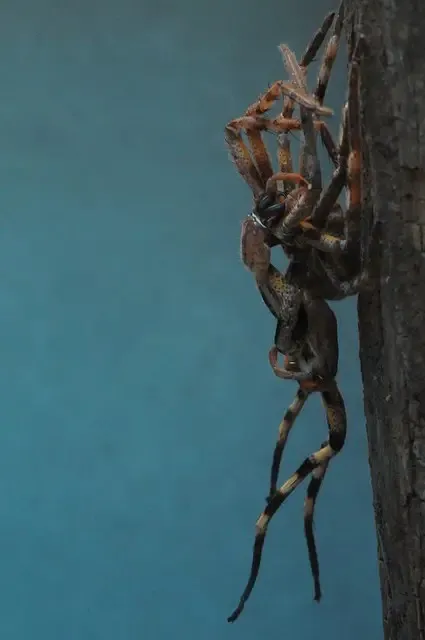
Occasionally, a tarantula may get stuck during the molting process. This is a serious condition that can be fatal if not addressed quickly. The most frequent causes are low humidity and environmental stress. Low humidity can cause the old exoskeleton to dry out and become difficult to shed. Increase the humidity in the enclosure immediately by misting or adding a water dish. Environmental stress, such as loud noises or frequent disturbances, can also disrupt the molting process. Provide a quiet and secluded environment for the tarantula. If the tarantula is stuck, and the situation is not improving, carefully try to help the tarantula, using wet cotton swabs to gently moisten the old exoskeleton. Do not force the tarantula out of its old skin. If your tarantula remains stuck for an extended period, seek help from a veterinarian or experienced tarantula keeper. This is a very delicate process and can cause more harm if not done right.
Conclusion
Tarantula molting is a natural and vital process. Understanding the tarantula molting stages is crucial for providing proper care and ensuring the health and longevity of your pet. By recognizing the signs of premolt, preparing the environment correctly, and avoiding disturbance during the molt, you can help your tarantula molt successfully. Be patient and observant. Careful attention to feeding, humidity, and environmental conditions will help your tarantula thrive. Remember that each molt is a sign of growth, and each successful molt brings you one step closer to understanding and appreciating these incredible creatures. Following these guidelines can help you become a better tarantula owner and enjoy the fascinating process of tarantula molting.
